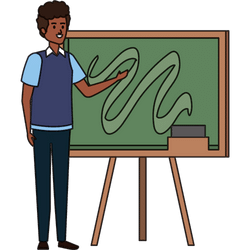Analysis: The Hundred-Year Teacher Shortage
I stumbled upon an editorial from the National Education Association that caught my attention. I’d like to share a few notable excerpts:
Is there currently a shortage of teachers? There is only one answer to this question. There is still a shocking lack of adequately trained teachers throughout the country. The statements claiming a surplus of teachers and advocating for lowered salaries pose a grave danger to the teaching profession and the advancement of education.
Furthermore, there are tens of thousands of individuals applying for teaching positions who lack both the personal and professional qualifications to effectively educate children. Allowing such teachers to enter the field would not only be detrimental to the nation’s children, but also a crime against their childhood. This must not be tolerated. We cannot let the unfounded belief that there is no teacher shortage go unchallenged.
The public, without a doubt, would willingly bear the cost if they understood the benefits that come from investing in quality education.
These excerpts are from an article published in The Journal of the National Education Association in October 1921.
During that time, according to the National Center for Education Statistics, there were approximately 657,000 teachers in the United States. With over 21.5 million K-12 students, the student-teacher ratio was approximately 33 to 1.
Now, let’s delve into some more recent excerpts, this time from a NEA Today article published in September 2016.
The United States is currently experiencing a significant shortage of teachers, with schools struggling to fill positions in subjects such as math, science, special education, bilingual education, and other fields. This deficit is most pronounced in nearly all, around 90 percent, of the schools with the highest needs.
Certain districts are resorting to temporary solutions, such as lowering the requirements to become a teacher and allowing underprepared educators into the classroom. While this may appear to be a quick fix, it poses long-term problems. Hiring underprepared teachers leads to high turnover rates, resulting in both costly replacement processes and diminished student achievement in schools with high turnover.
Instead, what we need are long-term solutions that aim to retain educators in the profession. This can be achieved by improving working conditions, providing comprehensive preparation and mentoring, and ensuring adequate resources are available for teachers to effectively perform their jobs.
NEA Vice President Becky Pringle emphasized the need for resources, stating, "We cannot continue to ignore the fact that resources are critical in solving this problem."
According to the National Center for Education Statistics, there are currently around 3,135,000 public school teachers, with a student-teacher ratio of 16 to 1. Since 1921, we have nearly quintupled the number of teachers, significantly increased the average teacher salary adjusted for inflation, and halved the student-teacher ratio.
If resources continue to be insufficient, perhaps it’s time to consider alternative approaches after 95 years.
For any tips or suggestions, feel free to email Mike at mike@the74million.org.
Sign up for Newsletter to receive stories like these directly in your inbox.
